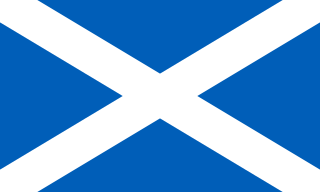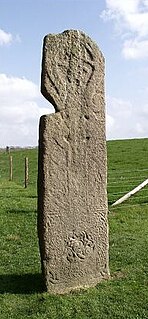 W
WScottish or Scots units of measurement are the weights and measures peculiar to Scotland which were nominally replaced by English units in 1685 but continued to be used in unofficial contexts until at least the late 18th century. The system was based on the ell (length), stone (mass), and boll and firlot (volume). This official system coexisted with local variants, especially for the measurement of land area.
 W
WThe carucate or carrucate was a medieval unit of land area approximating the land a plough team of eight oxen could till in a single annual season. It was known by different regional names and fell under different forms of tax assessment.
 W
WAn ell is a northwestern European unit of measurement, originally understood as a cubit. The word literally means "arm", and survives in form of the modern English word "elbow" (arm-bend). Later usage through the 19th century refers to several longer units, some of which are thought to derive from a "double ell".
 W
WThe firlot was a dry measure used in Scotland. For centuries it was the primary measure for all grains sold in the country. In the Scottish system a firlot was equal to 4 pecks, and the boll was equal to 4 firlots.
 W
WThe inch is a unit of length in the (British) imperial and United States customary systems of measurement. It is equal to 1⁄36 yard or 1⁄12 of a foot. Derived from the Roman uncia ("twelfth"), the word inch is also sometimes used to translate similar units in other measurement systems, usually understood as deriving from the width of the human thumb.
 W
WThe mile is an English unit of length of linear measure equal to 5,280 feet, or 1,760 yards, and standardised as exactly 1,609.344 metres by international agreement in 1959.
 W
WAn oxgang or bovate is an old land measurement formerly used in Scotland and England as early as the 16th century sometimes referred to as an oxgait. It averaged around 20 English acres, but was based on land fertility and cultivation, and so could be as low as 15.
 W
WA peck is an imperial and United States customary unit of dry volume, equivalent to 2 dry gallons or 8 dry quarts or 16 dry pints. An imperial peck is equivalent to 9.09 liters and a US customary peck is equivalent to 8.81 liters. Two pecks make a kenning (obsolete), and four pecks make a bushel. Although the peck is no longer widely used, some produce, such as apples, are still often sold by the peck in the USA.
 W
WA tron was a weighing beam in medieval Scotland, usually located in the marketplaces of burghs. There are various roads and buildings in several Scottish towns that are named after the tron. For example, Trongate in Glasgow and Tron Kirk in Edinburgh. Etymologically the word is derived from the Old French tronel or troneau, meaning "balance".